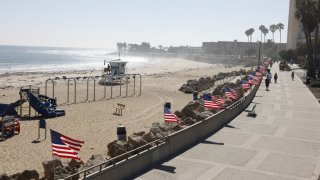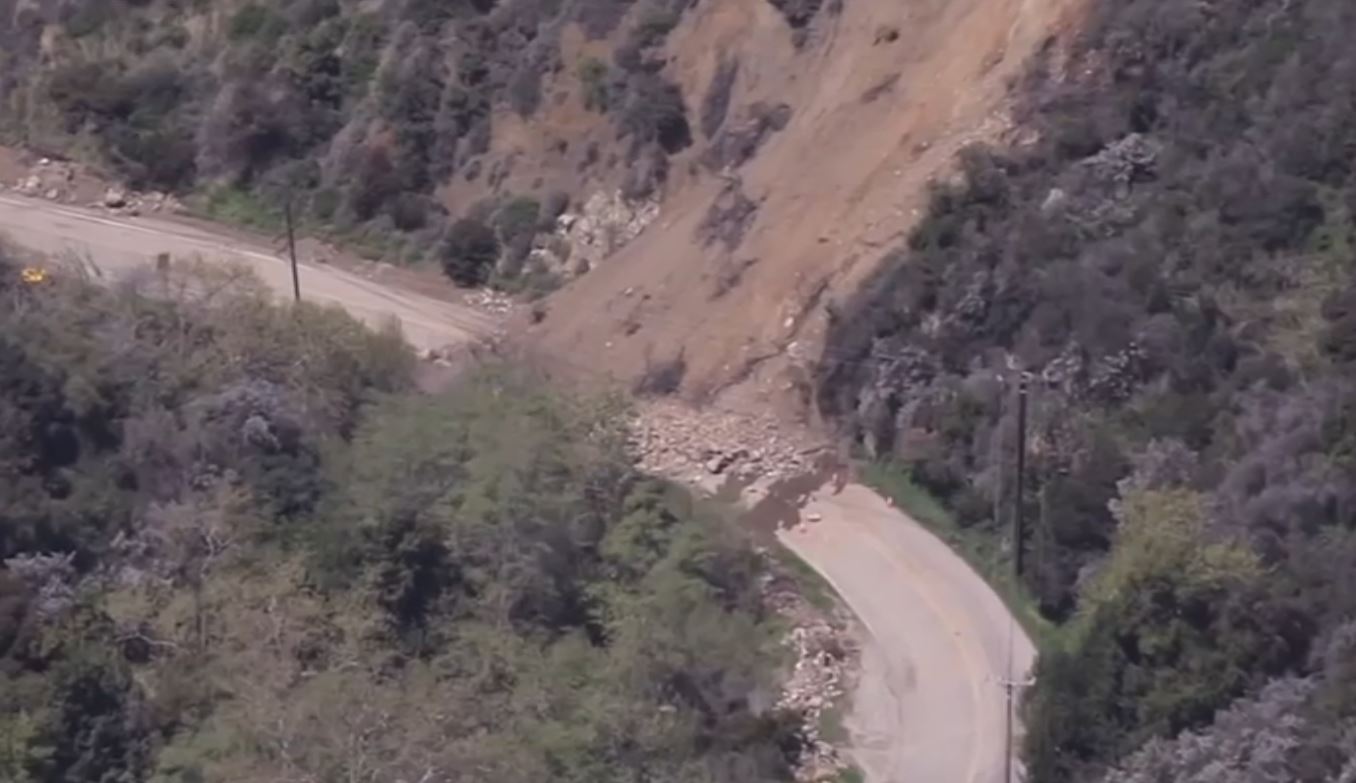
Californians mostly heeded warnings to stay away from beaches and other public spaces during the long weekend as state officials urged social distancing amid a spike in coronavirus infections and hospitalizations.
Many communities canceled July 4 fireworks shows and other annual festivities, changes that appeared to successfully keep crowds at bay.
Volunteers were acting as “goodwill ambassadors” to remind people about closures at Los Angeles County waterfronts, Department of Beaches and Harbors spokeswoman Nicole Mooradian said Sunday.
“In terms of compliance, most beachgoers have been staying away. But surfers, not so much," Mooradian said. A weekend swell brought big waves that proved irresistible to some, she said.
Mooradian wasn’t aware of anyone receiving citations for violating health orders.
The beach closures that began Friday in greater Los Angeles rolled northward through Ventura and Santa Barbara counties. In Orange County, hugely popular beaches such as Huntington and Newport also closed Saturday and Sunday.
San Clemente's beach remained open but thinner-than-usual crowds allowed most people to keep the recommended 6 feet (1.8 meters) apart.
Local
Get Los Angeles's latest local news on crime, entertainment, weather, schools, COVID, cost of living and more. Here's your go-to source for today's LA news.
“Everyone is kind of staying to their own,” beachgoer Julia Groves told the Orange County Register.
San Diego County beaches remained open and saw thousands of visitors. Many clustered in socially distanced groups but lifeguards said not everyone was obeying the rules despite public address system reminders.
On Saturday, California reported another 6,500 newly confirmed cases of coronavirus, bringing the state’s total to more than a quarter million cases. The actual number of infections is thought to be far higher because many people have not been tested, and studies suggest people can be infected with the virus without feeling sick.
For the two-week period that ended June 29, statewide hospitalizations increased 52% to 5,077. It's an alarming figure that has officials worried that hospitals could become overwhelmed.
Imperial County has in recent weeks transferred about 500 coronavirus patients to hospitals outside the region, including some as far away as the San Francisco Bay Area. The mostly rural county with a population of about 180,000 has had a positive rate hovering around 20%.
Last week three Imperial County patients were flown to University of California San Francisco Medical Center as part of an established process to help take the pressure off certain regions in urgent situations, the East Bay Times reported Sunday.
“As a state with a high risk of earthquakes and wildfires, this type of system enables us to respond to large-scale emergencies,” said Adrienne Green, the UCSF hospital's chief medical officer.
Gov. Gavin Newsom last week ordered the three-week closures of bars, indoor restaurant dining areas and other indoor venues for 21 of 58 counties, including the two most populous, Los Angeles and San Diego.
About 200 state inspectors that are part of new “strike teams” set up by Newsom fanned out over the weekend to enforce rules.
The Southern California cities of West Hollywood and Santa Monica as well as the central coast city of Monterey are enforcing mask mandates with tickets ranging from $100 to $300 for a first offense.
Authorities have warned that even ordinary gatherings of families and friends have been identified as sources of COVID-19 infections. In remote Northern California, Lake County reported its first COVID-19 related death last week, and Humboldt County said Friday that about a quarter of its 144 cases were reported in the past two weeks.
The state also is fighting an outbreak in its prisons. The virus is suspected of killing two more death row inmates at San Quentin State Prison, where about 40% of inmates are now infected, corrections officials said. Scott Thomas Erskine and Manuel Machado Alvarez both died on July 3, the California Department of Corrections and Rehabilitation said in a news release. At least five death row inmates at San Quentin have died from COVID-19.
The Los Angeles Police Department lost its first employee to COVID-19, officials announced Saturday. Senior Detention Officer Erica McAdoo died from complications of the disease on July 3, the department said on Twitter. Another 287 LAPD employees are quarantined at home after having been exposed to the coronavirus, according to the tweet.
A department spokesman declined to say how old McAdoo was or whether she had any underlying health conditions.
For most people, the new coronavirus causes mild or moderate symptoms, such as fever and cough that clear up in two to three weeks. For some — especially older adults and people with existing health problems — it can cause more severe illness, including pneumonia, and death.



